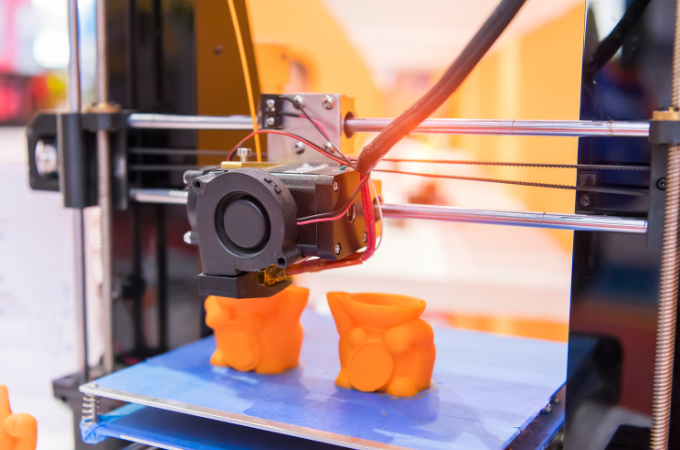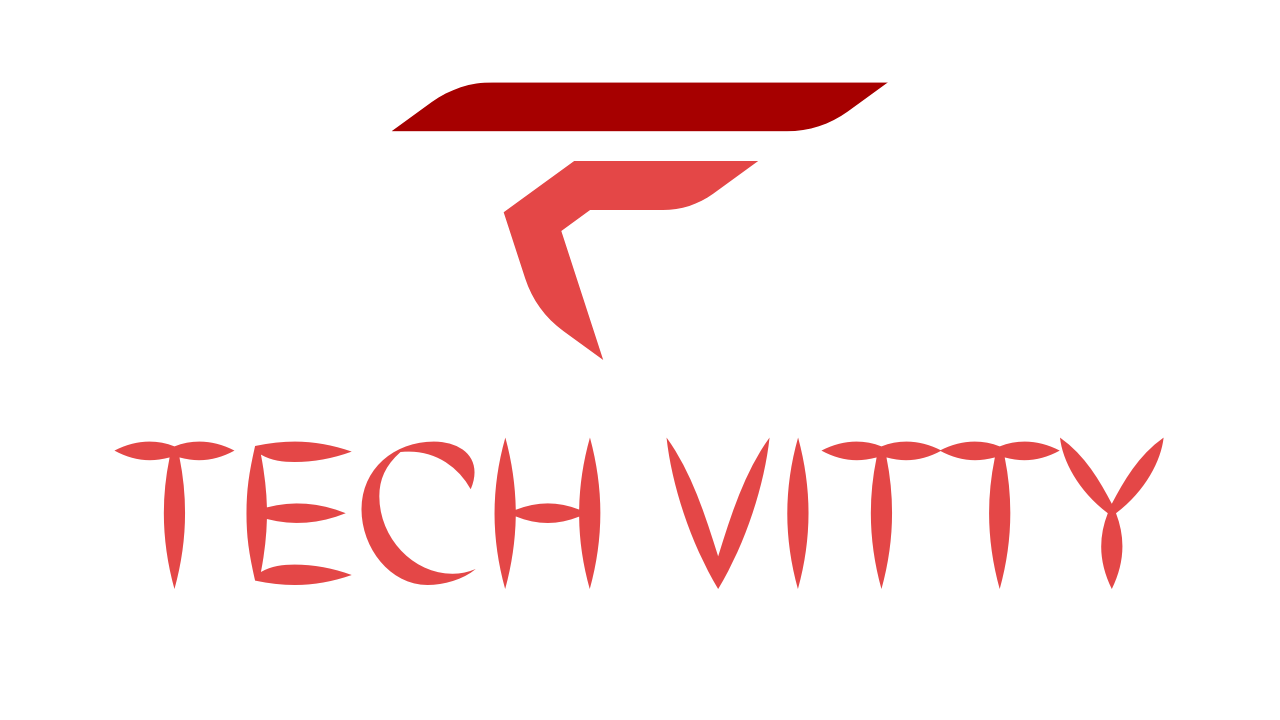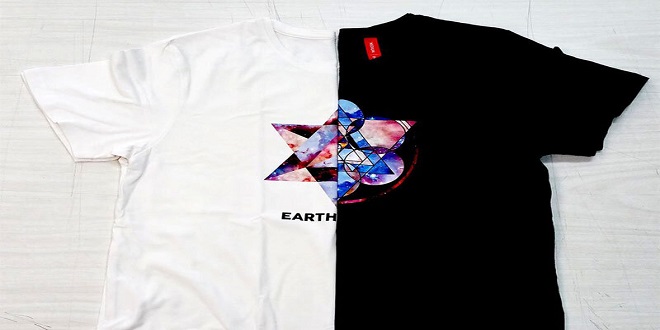All you need to know about 3D printing & Fabrication

Welcome to the fascinating world of 3D printing and fabrication! In today’s blog post, we’re going to delve into this innovative technology that has revolutionized countless industries. Whether you’re a tech enthusiast, a creative mind, or simply curious about the latest manufacturing advancements, you’ve come to the right place. We’ll explore everything from the history and inner workings of 3D printing to its incredible potential for the future. So fasten your seatbelts as we embark on an exciting journey through CAC.Works.
Works and discover all there is to know about 3D printing & fabrication!
What is CAC.Works?
If you’re new to the world of 3D printing and fabrication, you might be wondering what exactly CAC.
Works is. Well, let me enlighten you! CAC.
Works is a cutting-edge platform that brings together the power of technology and creativity to enable individuals and businesses to explore the endless possibilities of 3D printing.
At its core, CAC.
Works serves as a hub for all things related to additive manufacturing. It offers a wide range of services including design assistance, prototyping, production runs, and even access to state-of-the-art 3D printers. Whether you’re an entrepreneur looking to bring your product idea to life or an artist seeking to push the boundaries of traditional sculpture, CAC.
Works has got you covered.
One of the key features that sets CAC.
Works apart from other platforms is its commitment to quality. With a team of skilled professionals overseeing every step in the process – from design consultation through final production – they ensure that each project meets strict standards of excellence.
Moreover, CAC.
Works understands that time is precious in today’s fast-paced world. That’s why their streamlined workflow allows for quick turnaround times without compromising on precision or detail. So whether you need a single prototype or thousands of units manufactured, they’ve got it handled.
With user-friendly interfaces and intuitive tools, CAC.
Works makes it easy for anyone – regardless of technical expertise -to navigate through their platform and start transforming their creative visions into tangible reality.
So if you’re ready to embark on your own 3D printing journey with all the support and resources at your fingertips,CAC.
Works is here waiting for you! Get ready to unleash your imagination and experience firsthand how this remarkable technology can revolutionize industries across the globe.
What is 3D printing?
3D printing, also known as additive manufacturing, is a revolutionary technology that allows the creation of three-dimensional objects from digital designs. Unlike traditional manufacturing methods that remove material from a block to create an object, 3D printers build objects layer by layer.
The history of 3D printing dates back to the 1980s when the first patent for this technology was filed. Over the years, advancements in materials and software have made it more accessible and affordable for various industries.
So how does 3D printing actually work? It starts with creating a digital design using computer-aided design (CAD) software or scanning an existing object with a 3D scanner. The design is then sliced into thin layers, which are sent to the printer. The printer uses different techniques such as extrusion or laser sintering to deposit or solidify materials layer by layer until the final object is formed.
There are different types of 3D printers available today, each using its own unique method and materials. Some common types include Fused Deposition Modeling (FDM), Stereolithography (SLA), Selective Laser Sintering (SLS), and Digital Light Processing (DLP).
The benefits of 3D printing are vast. It allows for greater customization and flexibility in product design while reducing waste and lead time compared to traditional manufacturing methods. This technology has revolutionized fields such as healthcare, aerospace, automotive, fashion, architecture, and education.
However, there are also challenges associated with 3D printing. Cost can be a barrier for individuals or small businesses wanting to adopt this technology. Additionally, there may be limitations in terms of material options or print quality depending on the type of printer used.
Despite these challenges, the future of 3D printing looks promising. As technology continues to advance and costs decrease further over time,
we can expect even greater innovation and adoption of 3D printing across industries. The possibilities are endless,
The history of 3D printing
The history of 3D printing is a fascinating journey that spans several decades. It all began in the early 1980s when Chuck Hull, a physicist and engineer, invented stereolithography, the first ever 3D printing process. This groundbreaking technology paved the way for what we now know as additive manufacturing.
In the years that followed, various other methods of 3D printing were developed, each with its own unique approach. Selective Laser Sintering (SLS) emerged in the late 1980s, allowing for the creation of three-dimensional objects from powdered materials using laser beams. Fused Deposition Modeling (FDM) was introduced by Scott Crump in the late 1980s as well, utilizing melted thermoplastic filament to build up layers.
As time went on, advancements in technology made 3D printers more accessible and affordable. The development of new materials further expanded the possibilities of what could be created with this revolutionary technology. From rapid prototyping to custom manufacturing and even medical applications like prosthetics and implants, 3D printing has become an integral part of numerous industries.
Today, there are countless companies and individuals pushing the boundaries of what can be achieved through 3D printing. From intricate architectural models to functional automotive parts and even food creations – no project seems too ambitious for this transformative technology.
The history of 3D printing continues to unfold before our eyes as researchers explore new techniques such as bioprinting organs or constructing buildings using large-scale printers. With each passing year, we witness new breakthroughs that bring us closer to a future where almost anything can be fabricated at will.
So whether you’re an artist looking to bring your designs to life or an engineer seeking innovative solutions for complex problems – embrace the power of 3D printing! Its rich history serves as a testament to its potential for endless creativity and progress in fabrication technologies.
How does 3D printing work?
How does 3D printing work? It’s a fascinating process that brings digital designs to life in three dimensions. Let’s take a closer look at the steps involved.
First, a computer-aided design (CAD) file is created or obtained from an existing model. This digital blueprint serves as the foundation for the entire printing process.
Next, the CAD file is sliced into thin layers using specialized software. Each layer represents a cross-section of the final object and provides instructions for the printer on how to build it.
Once the slicing is complete, the actual printing begins. The 3D printer uses various materials such as plastics, metals, or even living cells in some advanced cases. These materials are deposited layer by layer according to the instructions provided by the software.
The printer follows these instructions meticulously, melting or solidifying each layer as required to gradually build up the object from bottom to top. The precision and accuracy of this process allow for intricate details and complex geometries that traditional manufacturing methods may struggle with.
Depending on factors like size, complexity, and material used, 3D printing can take anywhere from minutes to hours or even days to complete. Once finished, any support structures used during printing are removed manually or dissolved away if soluble supports were utilized.
And voila! Your 3D printed object is ready for use or further post-processing if desired – be it painting, sanding, assembly of multiple parts together – you name it!
That’s just a brief overview of how 3D printing works. Stay tuned for more information on its benefits and challenges in our upcoming sections!
The different types of 3D printers
When it comes to 3D printing, there are several different types of printers that can be used. Each type has its own unique features and capabilities, allowing for a wide range of applications and possibilities.
One of the most common types is Fused Deposition Modeling (FDM) printers. These printers work by extruding melted plastic filament layer by layer to create an object. FDM printers are affordable and easy to use, making them popular among hobbyists and educators.
Another type is Stereolithography (SLA) printers, which use a liquid resin that is cured with UV light to build objects layer by layer. SLA printers produce high-resolution prints with smooth surfaces, making them ideal for creating detailed prototypes or jewelry pieces.
Selective Laser Sintering (SLS) printers utilize a laser to sinter powdered materials such as nylon or metal into solid objects. This process allows for the creation of complex geometries without the need for support structures.
There are also Digital Light Processing (DLP) printers that use a projector screen to cure liquid resin into solid objects. DLP technology enables fast print times and high detail resolution.
Each type of printer has its own advantages and limitations, so choosing the right one depends on your specific needs and requirements. Whether you’re looking for affordability, speed, or intricate details, there’s a 3D printer out there that can fulfill your fabrication dreams!
The benefits of 3D printing
The benefits of 3D printing are far-reaching and have the potential to revolutionize various industries. One major advantage is the ability to create complex designs with intricate details that would be nearly impossible or time-consuming using traditional manufacturing methods. This opens up new possibilities for innovation in fields such as aerospace, automotive, healthcare, and even fashion.
In addition to design flexibility, 3D printing also offers cost savings. Traditional manufacturing often requires expensive tooling and molds, whereas 3D printing eliminates these upfront costs by directly translating digital designs into physical objects. This makes it particularly beneficial for small-scale production or customization.
Furthermore, 3D printing allows for rapid prototyping and iteration. Designers can quickly create multiple iterations of a product to test its functionality and make improvements before mass production begins. This not only speeds up the development process but also reduces the risk associated with costly errors.
Another advantage is the sustainability aspect of 3D printing. By utilizing additive manufacturing techniques, less material waste is generated compared to subtractive methods like cutting or milling. Additionally, localized production through 3D printing can reduce transportation emissions since products can be created closer to their end-users.
The benefits of 3D printing extend beyond mere convenience; they offer unparalleled opportunities for creativity, efficiency, cost-effectiveness, and sustainable practices across various industries
The challenges of 3D printing
The world of 3D printing is filled with endless possibilities and innovation. However, like any technology, it comes with its fair share of challenges. One major challenge in 3D printing is the high cost associated with purchasing a printer and the materials needed for printing. While prices have come down significantly over the years, it can still be a barrier for individuals or small businesses looking to get started.
Another challenge is the limited size and scale of objects that can be printed. Most consumer-grade printers have a relatively small build volume, which means larger items may need to be printed in multiple pieces and assembled later. This can result in weaker structural integrity and additional time spent on post-processing.
Accuracy and precision are also ongoing challenges in 3D printing. Achieving intricate details or complex geometries can often require advanced techniques or specialized equipment. Additionally, factors such as temperature fluctuations or calibration issues can affect print quality.
Material limitations pose another obstacle for certain applications. While there are many different types of materials available for 3D printing, not all of them possess the desired properties needed for specific projects. For example, some materials may lack strength or durability while others may not be suitable for food-contact applications.
Intellectual property concerns arise as 3D printers become more accessible to the general public. With the ability to reproduce copyrighted designs at home, protecting intellectual property rights becomes increasingly important but challenging.
Despite these challenges, advancements continue to push the boundaries of what is possible with 3D printing technology. As researchers work towards solutions and manufacturers improve their processes, we can expect these hurdles to diminish over time.
The future of 3D printing
As we look ahead, the future of 3D printing holds immense promise. The technology continues to advance at a rapid pace, opening up new possibilities and applications in various industries. Here are some exciting developments on the horizon:
1. Improved Materials: Researchers are constantly working on developing new materials that can be used for 3D printing. From biodegradable plastics to metals with enhanced properties, these innovations will further expand the range of objects that can be printed.
2. Faster Printing Speeds: As technology evolves, one area where significant progress is being made is in improving printing speeds. Innovations such as parallel printing and larger print heads have already made a difference, but we can expect even faster and more efficient processes in the future.
3. Miniaturization: With advancements in nanotechnology, it’s only a matter of time before we see 3D printers capable of creating micro-scale objects with intricate details and precision.
4. Customization at Scale: Currently, most 3D printing is done on a small scale or for prototyping purposes. However, as technology improves and costs decrease, we may soon witness large-scale production using additive manufacturing techniques. This could revolutionize industries like automotive manufacturing and construction by enabling mass customization without compromising efficiency.
5. Healthcare Breakthroughs: The medical field stands to benefit greatly from 3D printing advancements. Already, prosthetics and dental implants are being customized using this technology; however, there is potential for even greater breakthroughs like organ transplantation using bio-printing techniques.
6.Collaborative Design Process : With cloud-based design platforms becoming increasingly popular,socially connected CAD opens up new opportunities for collaborative design.
This allows designers globally ,to work together seamlessly ,sharing ideas,draft designs,and co-create innovative products.
Thus leading to democratizing innovation process .
While these developments show great promise for the future of 3D printing, it is important to note that there are still challenges to overcome. Issues such


